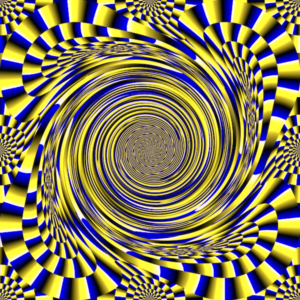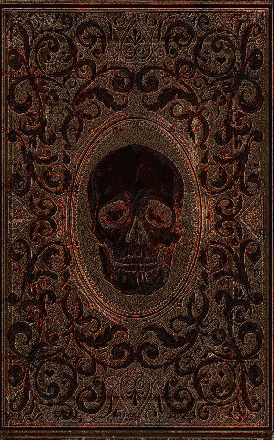Silent Image
Bard, Sorcerer, Wizard - 1 Level Spell
School: Illusion
Casting Time: 1 Action
Range: 60 ft
Components: Verbal, Somatic, and Material
Duration: 10 mInutes
Attack/Save: None
Reference: PH 276
Concentration
You create the image of an object, a creature, or some other visible phenomenon that is no larger than a 15-foot cube. The image appears at a spot within range and lasts for the duration. The image is purely visual; it isn’t accompanied by sound, smell, or other sensory effects.
You can use your action to cause the image to move to any spot within range. As the image changes location, you can alter its appearance so that its movements appear natural for the image. For example, if you create an image of a creature and move it, you can alter the image so that it appears to be walking.
Physical interaction with the image reveals it to be an illusion, because things can pass through it. A creature that uses its action to examine the image can determine that it is an illusion with a successful Intelligence (Investigation) check against your spell save DC. If a creature discerns the illusion for what it is, the creature can see through the image.
This spell has a material component of a bit of fleece.
My Comments:
(Quick note- welcome to our new author, Terra Katherine McKeown! I very much suggest checking out Terra’s amazing novel, Chasing Dawn (The Alters). I’ve enjoyed it very much! ~Dave)
Okay, so I’m a trickster, and in my games, I lean toward giving out advantages for good roleplaying. Therefore, I have a soft spot for illusion spells and enjoy when they are used judiciously and flavorfully. As my initial foray into writing spell reviews for Dungeons & Dave, let me bring out my inner Arcane Trickster and weave some holographic wisdom.
One of the great things about the “Image” spells (both Silent and Major) is that it really relies on the imagination of the players, and therefore the DM. While they can be used in combat to some pretty good effects, they are especially good for out of combat interactions.
This spell is a step up from the cantrip Minor Illusion in these specific ways:
- Silent Image has a longer duration, at least 10 minutes (longer, if you’re dedicated to the con) to Minor Illusion’s 1 minute.
- The 1st level spell is of a larger size, a 15-foot cube, three times larger than Minor Illusion. That gives you a large canvas to paint! How the spell is worded, however, makes this something that requires DM adjudication. The spell description specifically states “You create the image of an object, a creature, or some other visible phenomenon that is no larger than a 15-foot cube.” The emphasis is mine, and what I hinge the power of this spell on. While an object or creature is, ostensibly, a single image, visible phenomenon is…almost limitless. Want to create 27 creatures instead of one? As long as they are medium size, you can fill every 5-foot square in the area of effect.
As a DM, though, I have been known to require my illusionists to be a bit more specific in how they fill that space, though. I have had players simply say, “I want to make a troll that gets their attention.” Fair enough. However, those players that say, “I make a guard patrol, focusing on making sure the shadows move correctly and concentrating on making them move independently.” That kind of detail can warrant inspiration, or even give advantage to the player or disadvantage to the opponents, and separates the illusion artists from the dabbling wizard. - In Silent Image, your illusion can move. This makes the illusion more dynamic, and something that a clever illusion-caster can use to their roleplaying advantage. Those stoic guards that appeared from around the corner, staring daggers and tightening their grips on those wickedly-sharp pikes, might make the encroaching thug think twice about trouncing you.
- The biggest drawback is that there is no sound (or any other sensory effects) associated with this image. Silent Image is pure hologram. It’s good for creating an illusion of something that is too far away to really hear anything anyway, but up close, it’s a sure bet that an opponent will find something odd.
There are some cool things you can do with this, and I love perusing Reddit posts like this one for inspiration. However, a DM has to be careful when a Silent Image starts encroaching on how other spells, especially illusion spells, can work. My suggestion has always been to side more with the player’s desires unless they are trying to do something that is covered by another spell.
Here are a few examples.
Using Silent Image to create the skin and accoutrements of another creature to superimpose over your own is totally possible with this spell. Until someone is able to disbelieve the illusion, you have a suitable Disguise Self spell covering you without having that spell in your back pocket. However, the sounds your illusory disguise should have – such as the clanking of that full-plate you’re now wearing – will be non-existent. And if they – or the environment around you – tries to touch your illusory body, the game is over. That would suggest to me that they get an automatic attempt to Investigate the illusion, or maybe even give the opponent an advantage on that check.
Additionally, you could use Silent Image to create a duplicate or two of yourself that moves in the exact same ways that you are, but this won’t duplicate Mirror Image. I might rule that the illusion works for a round or two, but once a duplicate is hit by that ranger’s arrow, the whole illusion goes out the window.
But what about a non-illusion spell? What is stopping an illusionist from throwing up an illusory Wall of Fire? I might make an opponent hesitate, which might be all the party needs to slam and bolt a door, but even a simple-minded ogre would quickly realize there’s no heat, no crackling of the flame, and no smell of burning.
The Wall of Fire, though, brings one more final thought about Silent Image. Does the illusion you create cast light? As Dave mentioned in the Minor Illusion write up, creating an image of a torch doesn’t mean it casts light; it’s just a 3D rendering of the torch. That said, considering the dynamic of being able to move the image, your flickering flames could seem to cast light in the area of effect. It would be a waste of a first level spell slot to cast this to create candles so you can sit in the same 15-foot cube and read a book, but I would rule that is possible. And while those further away from the area of effect can see the image, because it casts light, it would give them a clue to its illusory status because it does not change the quality of light around it, like torches do.
In other words, it doesn’t cast light, but in full darkness you could see the illusion. This, of course, would be my ruling and another hint to my players that they may attempt to interact with the illusion, thereby dispelling it.
Hopefully this starts making you think about how complex and interesting illusions can be. Let me know what your thoughts are on Silent Image and illusions, generally, in the comments below!


